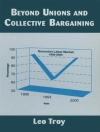‘Bruce Pease has written a much needed book on a long ignored topic: how does one lead analysts? Most analysis is at some level a group activity, whether in government or the private sector. Much has been written about good versus bad analysis and how to train analysts, but Pease, himself a veteran senior CIA analyst and manager, focuses on what the leaders of these analysts need to know and should be thinking about. Leadership matters in analysis as in all other endeavors, and Pease offers invaluable guidance on how to lead effectively. This book is a must for anyone in a leadership role in an analytic enterprise.’
—Mark M. Lowenthal, Ph D,
Intelligence & Security Academy, LLC
Written by an experienced professional who has led Navy Intelligence and CIA analysts in high-stakes situations, Leading Intelligence Analysis introduces the fundamental managerial skills and practical tools needed to lead analysis projects conducted by individuals and teams. Author Bruce Pease provides insights into key questions such as
What kind of environment draws out a team’s best work? What brings out their creativity? When does pressure bring out their best insights? When does pressure sap their intellectual energy? and
What kind of team builds new knowledge rather than engaging in group-think?
This book draws on the author’s perspective from decades of leading intelligence analysts on critical issues, including war in the Middle East, terrorism after 9/11, and nuclear threats.
Key Features
- Practical advice helps leaders of analytic units nurture insight with the understanding that it can be enabled but not manufactured.
- Discussion of a range of different types of analysis serves leaders conducting research in areas including data analysis, security analysis, geopolitical analysis, threat warning, counterterrorism, and business climate analysis.
- Practical advice on judging IT tools guides leaders to the correct data science approach for various situations.
Tabela de Conteúdo
Foreword
Acknowledgments
About the Author
Chapter 1: Leading Analysis is Different from Doing Analysis
The Leader of Analysis or the Uberanalyst
Which Substantive Analyst Responsibilities Carry Over?
No Lazy Thinking
Setting Standards for the First Time
Analyze Everything
Chapter 2: Understanding Analysts
Some Classic Traps
Ten Things Analysts Hate
Chapter 3: Shaping the Environment
Nurturing Trust is Job 1
Taking the Pulse
Seven Critical Balances
Stress in the Environment
Chapter 4: Choosing the Best Approach and Techniques
Evolving Approaches: Three Paradigms
Picking your paradigm
Blending Approaches
The Expanding Menu of Analytic Techniques
Keep Your Eye Out for New Choices
Chapter 5: Nurturing the New Idea: Creativity, Insight, and Innovation in Analysis
Creative Analysis?
Stifling Creativity and Innovation in Analysis
And What of Insight?
Promoting Creativity, Innovation, and Insight
Chapter 6: Asking the Right Question
Toxic Questioning
The Right Question
The Wrong Question
Chapter 7: The Hardest Question: What Is Going to Happen? Prediction and Warning in Analysis
Analyzing Predictability
When History Pivots
Humility, an Open Mind, and Practice Required
Prediction is Always a Gamble
Prediction is the Leader’s Responsibility
What’s the Worst that Could Happen? Leading Warning
What Is Reasonable in an Unreasonable World?
Chapter 8: Ethics in Analysis
What am I doing in this business?
Leading a Dialogue on Values
Climbing Down off the Analyst’s High Horse
Driving Collection
Resisting Politicization
Are We Responsible for Consequences?
Impact of Covert Action
In Closing
Chapter 9: Analysis as a Business
The Business Part of the Business
Ensuring Brand Loyalty (Getting Your Customers Hooked on Your Service)
Prioritize Your Customers
Tend Your Organization’s Reputation with the Front Office
Align Your Enterprise
Business Is Too Good—I’m Swamped!
Change is Reality
It Doesn’t Take an MBA
Chapter 10: The Tools of Twenty-First-Century Analysis
Judging Tools For Analysis
First- and Second-Level IT Tools to Help All Analysts
Third-level Tools: Big Data, Data Science, and Predictive Analytics
Two Keys: Volume and Repetition
The Dreaded—but Inevitable—Black Box
The Analyst Is Not About to be Replaced
Chapter 11: Analysis at the Speed of Information
Get Your Mind Right and Theirs
Build an Information Strategy
Can we analyze faster?
Nurture Your Inner Opportunist
Afterword
Bibliography
Index
Sobre o autor
Bruce E. Pease is a consultant on national security issues and the application of artificial intelligence; and he teaches leadership, ethics, and analysis. For 17 years, he led CIA′s front-burner components, specializing in threats to US security and developing expertise in today′s most pressing security issues. In the late 1990s, he led CIA′s Office of Near Eastern, South Asian, and African Analysis, providing key policy support during multiple crises in the Middle East. After the 9/11 attacks, he established and led CIA′s new Office of Terrorism Analysis and then became Deputy Director of the Counter Terrorism Center. In 2004 he became Director of CIA′s Weapons Intelligence, Nonproliferation, and Arms Control Center, analyzing the threat posed by weapons of mass destruction and emerging military technologies. His service also includes work as part of the White House staff, when he was Director of Intelligence Programs on the National Security Council, as well as eight years of active duty in the US Navy.












